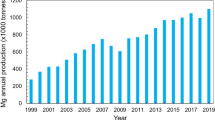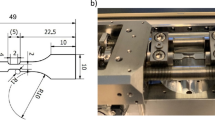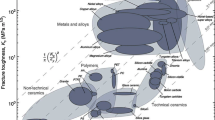Abstract
The evolution of microstructure and texture for drawn polycrystalline Ag was investigated by transmission electron microscopy and electron backscattering diffraction. The results show that there are deformation twins and some un-tangled discrete dislocations at low strains. When the strain is increased to 0.58, a lot of high density dislocation walls and microbands come into being. At the same time, some twins lose the twinning relationship of 60°<111>. At a strain of 0.94, both dislocation boundaries and twin boundaries will rotate to the axis direction of wires and the shear bands start to appear. When the strain is higher than 1.96, most of the boundaries are parallel to the drawn direction. Texture analysis indicates that with the strain increasing, the volume fraction of complex texture component decreases, but <111> and <100> texture components increase. However, the variation in the volume fraction of each texture component as strains is not evident when the strains are higher than 0.58. For polycrystalline Ag with low stacking fault energy, complex texture components are easily formed.
Similar content being viewed by others
Referencess
Guo N, Song B, Luan B F, et al. Deformation bands in fully pearlitic steel during wire drawing. Sci China Tech Sci, 2014; 57: 796–803
Hanazaki K, Shigeiri N, Tsuji N. Change in microstructures and mechanical properties during deep wire drawing of copper. Mater Sci Eng A, 2010; 527: 5699–5707
Estrin Y, Vinogradov A. Extreme grain refinement by severe plastic deformation: A wealth of challenging science. Acta Mater, 2013; 61: 782–817
Tu K N, Tang W. Metallurgical microstructure control in metal-silicon reactions. Sci China Tech Sci, 2014; 57: 505–519
Huang I T, Hung F Y, Lui T S, et al. A study on the tensile fracture mechanism of 15 µm copper wire after EFO process. Microelectron Reliab, 2011; 51: 25–29
Zhang X H, Tang B, Zhang X L, et al. Microstructure and texture of commercially pure titanium in cold deep drawing. T Nonferr Metal Soc, 2012; 22: 396–502
Cho J H, Rollett A D, Cho J S, et al. Investigation of recrystallization and grain growth of copper and gold bonding wires. Metall Mater Trans A, 2006; 37: 3085–3097
Baudin T, Etter A L, Penelle R. Annealing twin formation and recrystallization study of cold-drawn copper wires from EBSD measurements. Mater Charact, 2007; 58: 947–952
Bahmanpour H, Kauffmann A, Khoshkhooet M S, et al. Effect of stacking fault energy on deformation behavior of cryo-rolled copper and copper alloys. Mater Sci Eng A, 2011; 529: 230–236
Zhang Z J, Zhang P, Li L L, et al. Fatigue cracking at twin boundaries: Effect of crystallographic orientation and stacking fault energy. Acta Mater, 2012; 60: 3113–3127
An X H, Lin Q Y, Qu S, et al. Influence of stacking-fault energy on the accommodation of severe shear strain in Cu-Al alloys during equal-channel angular pressing. J Mater Res, 2009; 24: 3636–3646
Leffers T, Ray R K. The brass-type texture and its deviation from the copper-type texture. Prog Mater Sci, 2009; 54: 351–396
Bay B, Hansen N, Hughes D A, et al. Overview no. 96 evolution of fcc deformation structures in polyslip. Acta Metall, 1992; 40: 205–219
Hansen N, Jensen D J. Development of microstructure in FCC metals during cold work. Philos T R Soc A, 1999; 357: 1447–1469
Kim K S, Song J Y, Chung E K, et al. Relationship between mechanical properties and microstructure of ultra-fine gold bonding wires. Mech Mater, 2006; 38: 119–127
Chen J, Yan W, Liu C X, et al. Dependence of texture evolution on initial orientation in drawn single crystal copper. Mater Charact, 2011; 62: 237–242
Shin H J, Jeong H T, Lee D N. Deformation and annealing textures of silver wire. Mater Sci Eng A, 2000; 279: 244–253
Chen J, Ma X G, Yan W, et al. Effect of Transverse Grain Boundary on Microstructure. J Mater Sci Technol, 2014; 30: 184–191
Rajian K, Petkie R. Microtexture and anisotropy in wire drawn copper. Mater Sci Eng A, 1998; 257: 185–197
Chen J, Yan W, Li B, et al. Microstructure and texture evolution of cold drawing<110>single crystal copper. Sci China Tech Sci, 2011; 54: 1551–1559
Humphreys F J, Hatherly M. Recrystallization and related annealing phenomena. 2nd ed. Amsterdam: Elsevier, 2004
Li S, He S, Bael A V, et al. FEM-aided Taylor simulations of radial texture gradient in wire drawing. Mater Sci Forum, 2002, 408–412: 439–444
Park H, Lee D H. Effects of shear strain and drawing pass on the texture development in copper wire. Mater Sci Forum, 2002, 408–412: 637–642
Chen J, Yan W, Miao J, et al. TEM analysis of drawn single crystal copper wires produced by OCC method. Rare Metal Mat Eng, 2011; 40: 1727–1731
Huang X, Hansen N. Flow stress and microstructures of fine grained copper. Mater Sci Eng A, 2004, 387–389: 186–190
Li Z J, Winther G, Hansen N. Anisotropy in rolled metals induced by dislocation structure. Acta Mater, 2006; 54: 401–410
Waryoba D R. Deformation and annealing behavior of heavily drawn oxygen free high conductivity copper. Dissertation of Doctor Degree. Florida: The Florida State University, 2003
Author information
Authors and Affiliations
Corresponding authors
Rights and permissions
About this article
Cite this article
Ma, X., Chen, J., Chen, Z. et al. Evolution of microstructure and texture of cold-drawn polycrystalline Ag with low stacking fault energy. Sci. China Technol. Sci. 58, 1146–1153 (2015). https://doi.org/10.1007/s11431-015-5862-8
Received:
Accepted:
Published:
Issue Date:
DOI: https://doi.org/10.1007/s11431-015-5862-8




